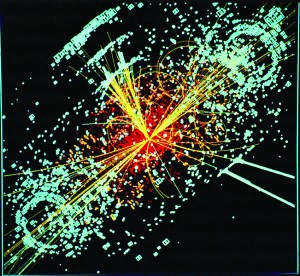
High-Energy Physics
High Energy Physics collaborates on the ATLAS experiment at CERN’s Large Hadron Collider (LHC). ATLAS observes proton collisions at the high energy frontier. ATLAS data is used to explore electroweak symmetry breaking and the Higgs mechanism, and to search for evidence of dark matter, supersymmetry, micro black holes, new quarks and gauge bosons, and physics beyond the Standard Model.
Current group analysis interests are currently searching for dark gauge boson decays to prompt leptons jets. UTD group members are long-time members of the group that built and operates the ATLAS Pixel detector, and they are contributing to the development of the Phase 2 Inner Tracker (ITk) upgrade.

UT Dallas scientists and students are contributing to the operation and upgrade of the ATLAS Pixel Detector, the inner-most of ATLAS’ tracking devices that immediately surrounds the interaction point.
The High Energy Group are long-time members of the BaBar experiment which observed the collisions of electrons and positrons produced with the PEP-II asymmetric energy storage ring, a.k.a. “b-Factory” at the SLAC National Accelerator Laboratory.
Asymmetric beam energies facilitated the study of CP violation, e.g. differences between the decay of mesons containing bottom quarks and the corresponding antiparticles.
BaBar collected its last collisions in 2008, but data analysis continues. UTD group members were the lead analysts for BaBar’s discovery of the Y(4260), one of Discover Magazine’s top 100 science stories of 2005.